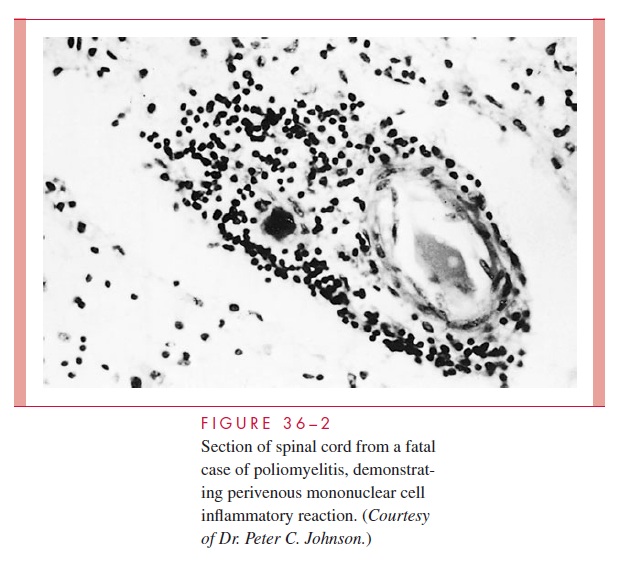Chapter: Medical Microbiology: An Introduction to Infectious Diseases: Enteroviruses
Polio
POLIO
EPIDEMIOLOGY
Worldwide, the most important enteroviruses are the three poliovirus serotypes (types 1, 2, and 3). They first emerged as important causes of disease in developed temperate zone countries during the latter part of the 19th century, and they have become increasingly important elsewhere as living conditions improve in developing countries. This somewhat paradoxical situation is related to the fact that the risk of paralytic disease resulting from infection increases with age. Improvement of sanitary conditions tends to impede spread of the viruses; thus, individuals may become infected not in early infancy but later in life, when paralysis is more likely to occur.
PATHOGENESIS
The particular tropism of polioviruses for the CNS, which they usually reach by passage across the blood–CNS barrier, is perhaps favored by reflex dilatation of capillaries sup-plying the affected motor centers of the anterior horn of the brainstem or spinal cord.
An alternate pathway is via the axons or perineural sheaths of peripheral nerves. Motor neu-rons are particularly vulnerable to infection and variable degrees of neuronal destruction. The histopathologic findings in the brainstem and spinal cord include necrosis of neu-ronal cells and perivascular “cuffing” by infiltration with mononuclear cells, primarily lymphocytes (Fig 36–2).

Related Topics